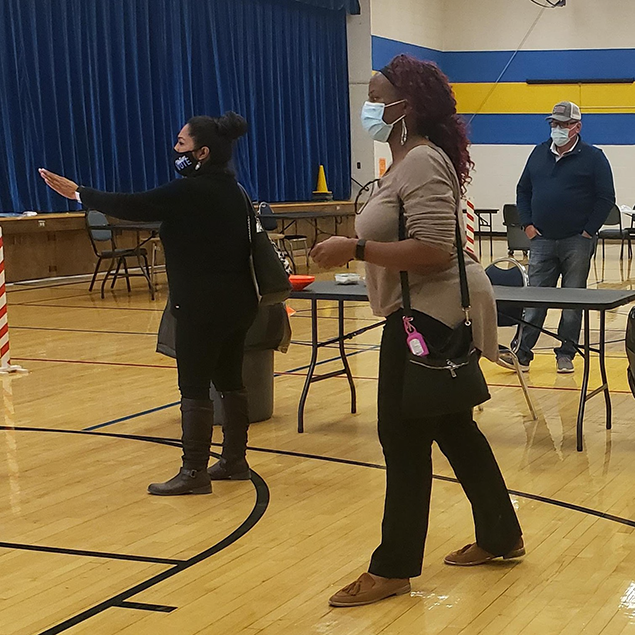Recommendations for Fully Vaccinated People
COVID-19 Homepage
Protecting Voices, Votes, and Culture
On Election Day 2020, Ada Dieke sprinted off her flight in Atlanta and raced to the polling station to cast her vote with only minutes to spare.
Several hours earlier, she had been in southeastern Idaho helping the Shoshone-Bannock Tribes roll out their COVID-19 safety protocols for community voting. Casting her own vote was a symbolic bookend to her month-long assignment with the tribe.
As a CDC health scientist, Ada has become a frequent traveler. And she rates her deployment to the Shoshone-Bannock Tribes was a rewarding one.
When Ada arrived, she soon realized that one of the big issues among response workers was exhaustion. They were trying to dedicate hours to the COVID-19 efforts while also working their normal day jobs.
“They were trying to protect their reservation and their tribe from dying,” she says. “They had lost elders, and if you understand the culture, elders hold so much of the memory and so much of cultural ways of life.”
Ada found herself adapting to the changing needs of the tribes as each day brought new and different tasks. Her day might include visiting the tribe’s casino to review social distancing guidelines and other prevention measures or working with COVID-19 contact tracers. Ada met regularly with a variety of community members, and she found it particularly productive when she could take issues directly to the Tribal Council.
“That was really cool to stand before a Tribal Council and talk about why we were there and what recommendations we had,” Ada says. “We were able to provide the latest CDC guidance directly to the Council, and they were able to ask us questions right there on the spot. Moments later, they would deliver that information to the community using Facebook Live.”
Ada took the opportunity to help create trusted messaging from respected community members that were easy to access on the tribe’s website, including public service announcements featuring tribal elders. Those videos are now available on the tribe’s Facebook page and website.
Ada’s experience in Idaho was also timely in preparing for the November elections. Working with the tribal safety officer, polling locations were organized to assure 6 feet of distance, availability of safety supplies, and messaging about safe voting that were incorporated into press releases and Facebook posts.
Ada is part of a CDC response team that is always ready to deploy quickly. However, she knows that while responding to emergencies, she needs to keep her personal connections alive and take care of herself. She meditates daily and does her best to maintain that practice during her travel assignments. She also adds yerba mate tea, workouts, vitamins, reading, dancing, and weekly check-in calls with family and friends to her list.
“These things aren’t always easy to do, but you figure out what will work, and you adjust,” she says.
As a student at the University of Arizona, Ada planned to go to medical school. But in her final year as an undergraduate, her professor noticed that she gravitated toward community health classes and topics, and she was intrigued by what she calls the “people-oriented, community-focused, and dynamic nature” of the field. Her professor pulled her aside and suggested she consider public health. After school and a customer service job with UPS, she started working with the Women’s Health Initiative, an offshoot of the University of Arizona School of Public Health. That was her segue into the field.
“Since then, I feel like my life has completely changed,” Ada says. “Lots of different doors opened, and lots of awesome opportunities in public health came my way.” Among them was a chance to learn about the health system of the Navajo nation in the Southwest as part of her graduate school experience.
“You would really get to see what people had to contend with to get healthcare services,” she says. She recalls staying in a small hogan – a traditional dwelling — and herding sheep “to get fully immersed in the experience.”
Another highlight was working in Arizona with middle school students as part of the Defeating Diabetes Dance and Diet program, where she helped the students learn to prepare healthy and culturally relevant foods while incorporating diabetes education and teaching hip-hop dance.
“I always go back to the experience as thinking, wow, I can combine all of these things and still have an impact,” she says.
